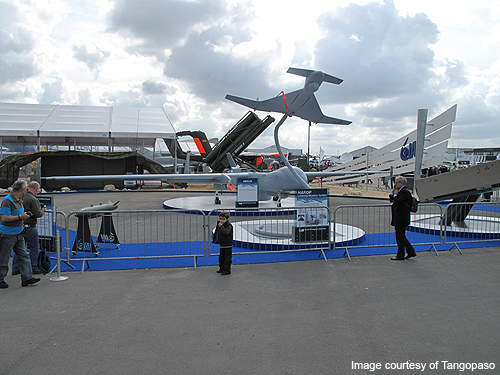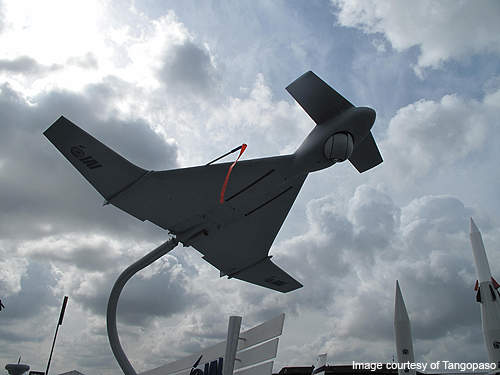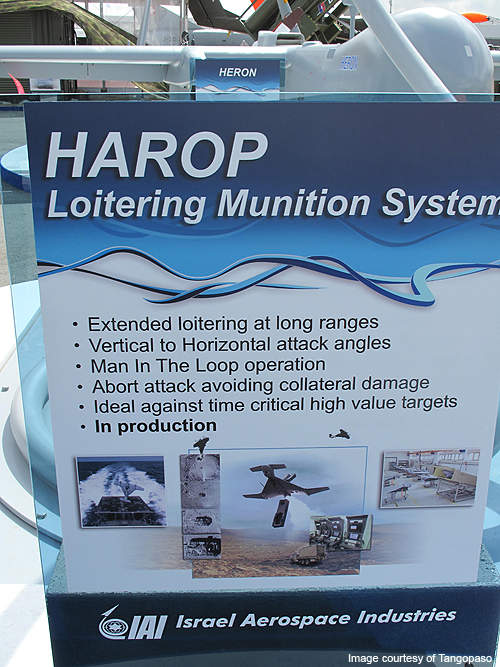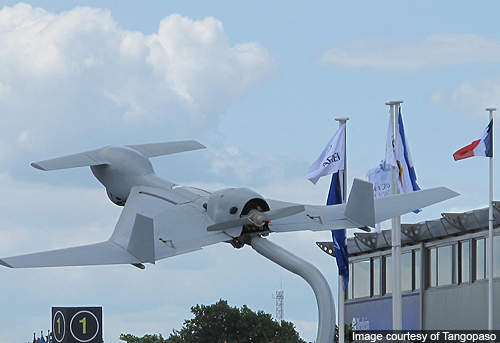Harop is a loitering munition (LM) system developed in Israel by the MBT missiles division of Israel Aerospace Industries (IAI). The unmanned combat aerial vehicle is also known as the Harpy-2 loitering munitions missile. The drone loiters over the battlefield and attacks the targets by self-destructing into them.
The Harop unmanned combat aerial vehicle (UCAV) has been developed from the Harpy unmanned aerial vehicle (UAV), also developed by the IAI. This combat drone was unveiled in India at the Aero-India show in February 2009.
Harop loitering munition orders and deliveries
In September 2009, the Indian Air Force (IAF) purchased ten Harops from IAI under a $100m contract.
During the same month, Germany purchased an undisclosed number of the Harop loitering munition systems from IAI. The German variant will be developed in cooperation with Rheinmetall Defence for the German Armed Forces. The German Ministry of Defence (MoD) had earlier funded the development of Harop according to their specific requirements. The UCAV has also been ordered by the Israeli armed forces.
Turkey is reported to be the launch customer of the expendable UCAV in 2005 with a $100m contract. White Hawk, the UK version of Harop, was a finalist in the UK’s loitering munition capability demonstration (LMCD) programme in October 2005.
IAI completed a series of flight demonstrations and operational tests of the Harop loitering munition for its customers in the first half of 2015. The demonstrations involved evaluation of Harop’s performance capabilities including observation, target destruction, flight altitude, manoeuvring and loitering.
Loitering munitions system design
The Harop has been developed to perform suppression of enemy air defence (SEAD) operations. The munition system measures 2m in length and has a wingspan of 3m.
The Harop system consists of the munition units, transportable launchers and a mission control shelter, which provides real-time access to control the Harop by a man-in-the-loop.
Unlike other UCAVs that carry explosive warheads, the Harop itself is the main munition. The munition system engagements can be approved or the attacks can be aborted using the controller.
The Harop missiles can be launched from various transportable platforms including sea and ground based canisters or air launched to navigate towards the potential target area. It can be launched at any angle, at a horizontal or vertical trajectory. The sealed container ensures it copes with harsh battlefield conditions. The launcher has a fuelling system to provide all-time readiness.
Mission roles
The Harop attacks the enemy targets with an onboard explosive of 23kg (51lb). It can automatically search, detect and accurately attack the mobile or static targets at long range. It detects the strong pulses transmitting from communication targets such as missile radars and collides with the source.
It can be deployed in urban warfare, high-intensity and low-intensity conflicts and counter-terror missions. The targets include high-velocity mobile enemy missiles, and moving and time-critical targets at sea or land such as radars and hideouts.
Mission systems
Unlike the automated Harpy missile system, the UCAV can be controlled using a remote when it is in flight. The airborne system incorporates a high-quality, night and day, electro-optical and infrared seeker, and anti-radar homing system to perform missions 24/7.
It also equips a forward-looking infrared (FLIR) and colour charge-coupled device (CCD) camera, which offers a hemispherical 360° coverage. The relay of video imagery will aid the operator in assessment of the battlefield through a satcom data link.
Performance
The Harop navigates and loiters in the combat area after it is launched from a vehicle-mounted container.
When the signals are exposed, it strikes the spot target immediately before its activation. The LM can operate in two guidance modes.
The Harop anti-radar homing system allows it to attack the radio-emitting and moving targets. A non-emitting target such as shutdown radars and suspected ballistic missile sites are detected by the electro-optical sensor of the RF seeker. It allows the operator to attack these targets, which are not detected by the automated homing system.
A second UCAV can be used to provide the battle damage assessment (BDA) of the target area to the operator. The attack can also be aborted by the operator to avoid collateral damage. The LM returns to the loitering mode when the attack mission is aborted. Driven by a propeller, Harop has an operational range of 1,000km. It can manoeuvre in the air for up to six hours.








